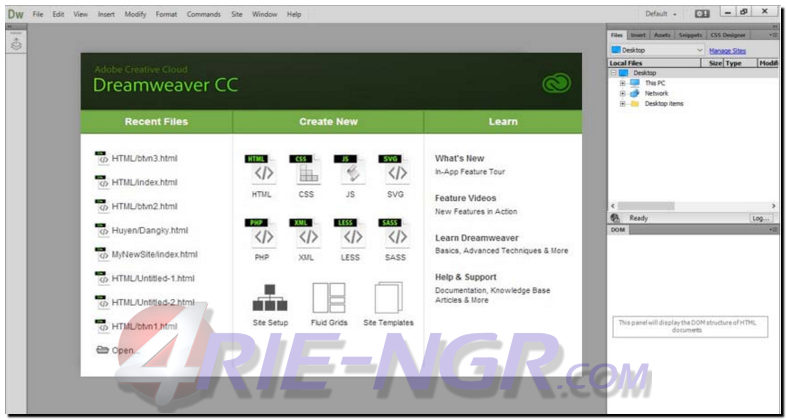
In a sense, Dreamweaver’s broad remit may continue to be its undoing, and plenty of designers continue to ditch Adobe’s giant in favour of smaller and more efficient alternatives. Although legacy cruft remains stubbornly welded to the application – Design view still lurks behind Live like a bad smell, reminding you of the bad old days of web design – there’s a clear effort here to bring Dreamweaver kicking and screaming into the present. It has tools for ardent hand-coders and also designers who prefer working in a more visual manner. In many ways, Dreamweaver remains the most ambitious web design application around, aiming to appeal to all-comers. Its “Adobe OS” stylings still feel alien to both OS X and Windows. Although many of the new features are pretty great, it doesn’t feel all that pleasant to use. It also feels cramped and cluttered, which is a criticism that can be levelled at Dreamweaver as a whole.

It could really do with a means to expand and contract all nested items within an element via a single click, though. You can use it to quickly scan the structure of your document and shift things around. The most notable change to the UI is a new DOM panel, which resembles equivalent features in the vein of Coda. The pop-ups are a bit small, however, and I did end up wishing this feature worked with a bunch of other things, such as links.

New previewing capabilities also prove useful, displaying a popup when you hover the cursor over an image or colour reference.

Although useful for quickly spotting specific elements or class values, it’s most handy for rapidly finding terms within a page’s copy. The first is one of Adobe’s “technology previews” (or “unfinished bits”), which highlights all instances of a double-clicked term. Two additional Code view updates especially caught my eye. There is a learning curve, but once mastered Emmet is extremely powerful, and it’s great to see baked-in support. The latter is a system that enables you to type something like “#menu>ul>li*5”, hit Tab and then have your abbreviation expand into the full code (in this case, a five-item unordered list within a div that has an id value of “menu”).

There’s support for linting code, to weed out errors in real-time, and also Emmet. Designers primarily interested in Code view receive some decent updates, too.


 0 kommentar(er)
0 kommentar(er)
